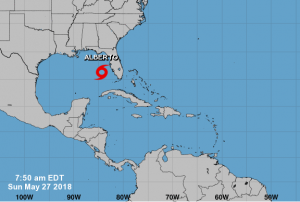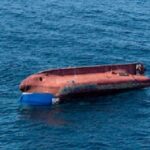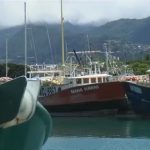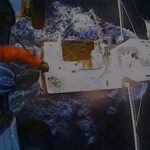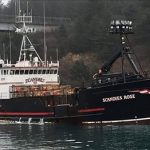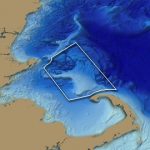Monthly Archives: September 2018
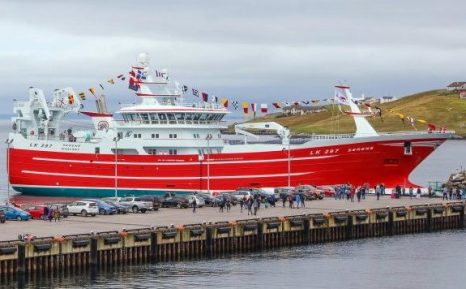
Big turnout to welcome the eighth Serene to Whalsay
Crowds gathered at Symbister on Saturday afternoon to watch the arrival of Whalsay’s latest pelagic trawler, the 82-metre Serene. The boat, the latest of eight to bear the same name, was built at the Karstensens shipyard in Denmark. She is understood to be Shetland’s largest fishing vessel so far. Skipper Bobby Polson and partners signed the order for the new boat at the Skipper Expo trade show in Aberdeen two years ago. >click to read<09:28

Alaskans worried by prospect of deep-sea fish farms
In a Centennial Hall listening session, Alaskans raised concerns about federal plans to boost open-ocean fish farms under a new strategic plan for the U.S. Department of Commerce. On Friday afternoon, Tim Gallaudet, acting undersecretary of commerce for oceans and atmosphere, hosted a listening session at the end of a weeklong gathering of National Oceanic and Atmospheric Administration experts in Juneau. NOAA is an agency of the Department of Commerce, and Gallaudet is among the figures hosting meetings across the country as part of the process that creates the strategic plan.,, Chris Oliver, assistant administrator for NOAA Fisheries and former director of the North Pacific Fishery Management Council, said concerns about aquaculture are somewhat misplaced. >click to read<09:00
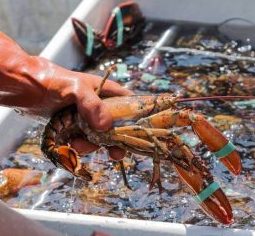
PEIFA puzzled over prices: association says P.E.I. price is 25 cents behind New Brunswick’s
The Prince Edward Island Fishermen’s Association is describing it as “puzzling” that the price P.E.I. fall lobster fishermen are receiving for their catch is trending 25 cents a pound lower than what New Brunswick fishermen are receiving. The fall fishermen all fish in the same body of water, Lobster Fishing Area 25 in the Northumberland Strait. “Despite warmer than normal temperatures, harvesters report robust product is being delivered to buying stations in Prince County,” the PEIFA says. The association notes many fall fishermen invested fairly significantly in recent months in onboard storage equipment to maintain the quality of their catch. >click to read<18:25
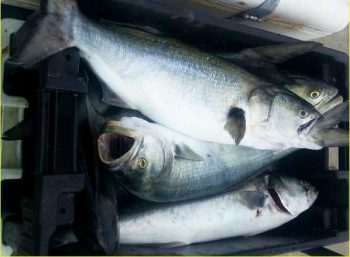
Have bluefish changed their habits?
What is causing them to change their behavior is puzzling fishermen and federal fishery managers who appear to have hit a wall trying to figure out the best way to utilize the fish. By all indications the numbers of bluefish up and down the East Coast are not scarce, they’re just not where they’re expected to be. “There’s an abundance of them. They’re just 80 to 100 miles offshore where the longliners can’t keep them off the hook,” said Captain Lenny Elich, who runs the Miss Barnegat Light party boat. The two federal regional bodies that manage bluefish want to revise the allocation of bluefish between commercial and recreational fisheries by taking as much as 4 million pounds from the recreational harvest and giving it to commercial fishermen. >click to read<14:26
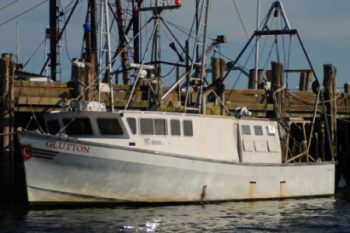
Coast Guard, local fire department medevac fisherman off Provincetown
Coast Guard crews along with the Provincetown Fire Department medically evacuated a fisherman Saturday morning after he fell overboard approximately two miles off the coast of Provincetown. The captain of the scallop boat Glutton notified the Coast Guard at approximately 7:15 a.m. that one of his crew, a 24-year-old man, had fallen overboard and became entangled in fishing gear. The fisherman freed himself, resurfaced and was recovered by the Glutton crew. (photo credit Building Provincetown) >click to read<11:37
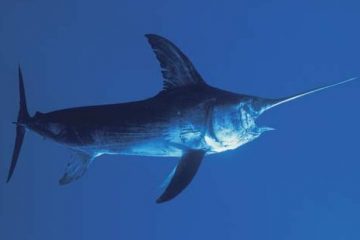
CALIFORNIA VOTES TO MAKE ITSELF MORE RELIANT ON IMPORTED FISH
California lawmakers passed legislation that would ban drift nets and help save endangered sea animals, but critics argue such a ban would ultimately have the opposite effect.,,, “I don’t know what I’d do,” Mike Flynn — who has depended on drift gill nets to capture swordfish for 40 years — said in a statement to NBC Bay Area. “There’s very few of us left, and we don’t seem to have a chance … we’re being villainized, unjustly.”,, The campaign to ban large drift nets in California began several years ago. Environmental groups — Mercy for Animals, Sea Legacy, Turtle Island Restoration Network and others,,sent a team of photographers underwater with the goal of capturing heart-wrenching pictures of trapped fish. The photos were used by activists to demand a ban. >click to read< In a related post about the photographer, SHOCKER: National Geographic admits they were wrong about “starving polar bear” video – >click to read<10:01
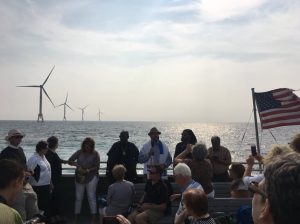
Faith Leaders Bless Block Island Wind Farm, Call For More Offshore Wind
On Monday, more than 110 people of faith from New Jersey, New York, Rhode Island, Massachusetts, Pennsylvania and Maryland stood silently as Buddhist, Jewish, Muslim, Christian and Ethical Culture Society leaders took turns offering reflections, readings from sacred writings and blessings during a ceremony at the Block Island Wind Farm. The ceremony was part of Trek to the Turbines, an educational ferry tour of the U.S.’ first offshore wind farm, located off the coast of Block Island, R.I., and developed by Deepwater Wind. The event was organized by interfaith environmental organization GreenFaith and the National Wildlife Federation (NWF), along with support from Jersey Renews. >click to read>09:15

































